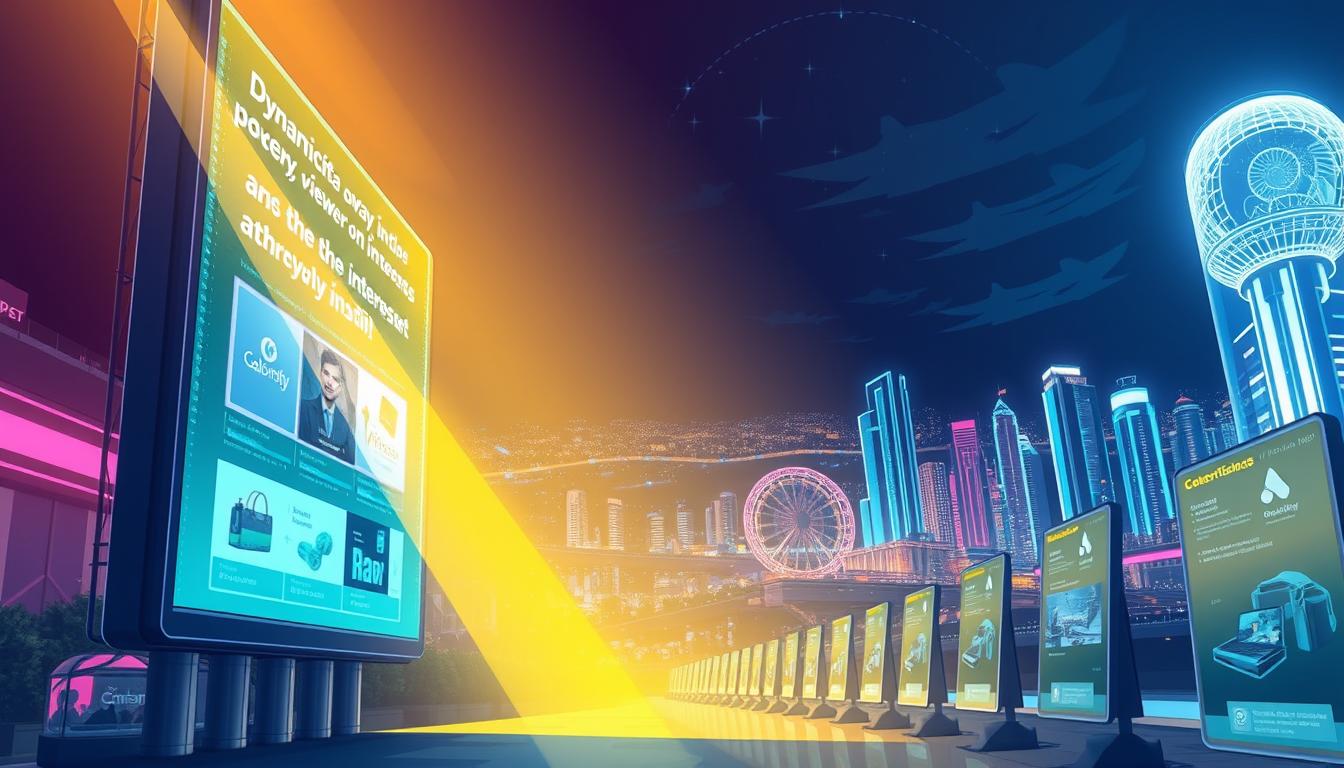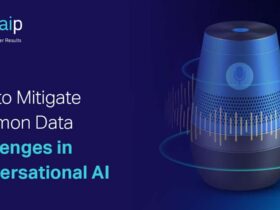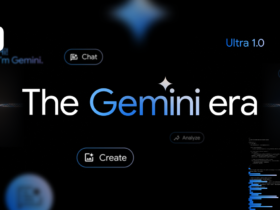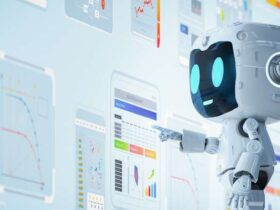Artificial intelligence (AI) is revolutionizing the digital advertising landscape, offering businesses unprecedented opportunities to enhance their campaigns. By leveraging AI, companies can now generate ad creatives, optimize budgets in real-time, and predict campaign performance with remarkable accuracy. This shift marks a significant departure from traditional advertising methods, where creativity and targeting were largely manual processes.
AI-powered advertising platforms, such as those developed by Google, are enabling businesses to distribute ads with precision, ensuring each ad reaches its optimal audience at the right moment. This level of targeting not only improves the effectiveness of campaigns but also maximizes the return on investment (ROI) for advertisers. The integration of machine learning and generative AI allows for the rapid creation of numerous ad variations, catering to diverse audience preferences and behaviors.
Moreover, AI-driven tools are empowering advertisers to allocate budgets more efficiently and generate high-performing creative assets. These advancements are reshaping how businesses approach online advertising, making it more data-driven and results-oriented than ever before. As we explore this transformative shift, we will delve into the innovative strategies and technologies that are redefining the future of digital advertising.
Key Takeaways
- AI is transforming digital advertising through enhanced targeting and real-time optimization.
- Machine learning and generative AI enable rapid creation of diverse ad variations.
- Platforms like Google use AI to distribute ads with micro-second precision.
- AI improves budget allocation and creative asset generation for better campaign performance.
- AI-driven advertising is reshaping how businesses approach online marketing strategies.
Understanding the Evolution of Online Advertising with AI
Artificial Intelligence (AI) has emerged as a transformative force in the advertising world, reshaping how businesses connect with their audiences. At its core, AI is the science of creating intelligent machines that can learn from data and recognize patterns. This technology has evolved from handling simple tasks to orchestrating complex advertising campaigns, making it an indispensable tool for modern marketers.
Defining Artificial Intelligence and Its Role in Advertising
AI’s role in advertising is multifaceted. It excels at analyzing vast amounts of data, including images, text, and user behavior, to deliver insights that were once unimaginable. By leveraging these capabilities, businesses can create more personalized and effective campaigns. For instance, AI can optimize ad creatives in real-time, ensuring that each user sees content tailored to their preferences and behaviors.
The Transition from Traditional to Data-Driven Campaigns
Traditional advertising often relied on broad, one-size-fits-all approaches, with limited feedback mechanisms. The advent of digital marketing, especially with AI, has shifted this paradigm. Today, campaigns are dynamic and data-driven, leveraging real-time user feedback and performance metrics to refine strategies continuously. This transition has not only enhanced the precision of advertising efforts but also improved overall campaign performance.
| Aspect | Traditional Campaigns | AI-Driven Campaigns |
|---|---|---|
| Targeting | Broad, based on demographics | Granular, based on user behavior and preferences |
| Feedback | Limited, often post-campaign | Real-time, enabling immediate adjustments |
| Optimization | Manual, periodic adjustments | Automated, continuous refinement |
| Creativity | Static, less personalized | Dynamic, highly personalized |
This evolution underscores AI’s dual role as both a creative tool and a performance monitor, driving the future of digital advertising forward. By understanding this transformation, businesses can better harness AI’s potential to enhance their marketing strategies and deliver more impactful campaigns.
The Rise of AI-Powered Advertising
In recent years, AI has emerged as a cornerstone in modern advertising, reshaping how businesses engage with their audiences. By integrating advanced technologies like natural language processing and machine learning, AI is driving significant improvements in conversion rates and campaign effectiveness.
Key Components of Modern AI Technologies
At the heart of AI-powered advertising lies the ability to generate conversion-driven content. Machine learning algorithms analyze vast amounts of customer data to create highly personalized ad messages. This level of customization not only enhances customer engagement but also boosts overall conversion rates.
For example, AI can optimize ad creatives in real-time, ensuring each user sees content tailored to their preferences. This dynamic approach streamlines content creation and improves marketing efficiency. Additionally, AI tools can predict campaign performance, allowing businesses to allocate budgets more effectively and maximize ROI.
| Aspect | Traditional Advertising | AI-Driven Advertising |
|---|---|---|
| Targeting | Broad, based on basic demographics | Precise, based on behavior and preferences |
| Content Creation | Static and less personalized | Dynamic and highly personalized |
| Optimization | Manual adjustments | Automated, real-time adjustments |
AI transforms standard advertising into a refined process that serves both strategic marketing goals and personalized customer experiences. This interplay between technology and creativity is redefining the future of digital advertising.
Strategic Advantages of AI in Digital Campaigns
AI is reshaping digital marketing by offering unparalleled strategic advantages that empower brands to thrive in competitive landscapes. By integrating AI into their campaigns, advertisers can achieve precision, efficiency, and scalability that were once unimaginable.
Real-Time Optimization and Smart Budgeting
One of the most significant benefits of AI in digital campaigns is its ability to optimize in real-time. Platforms like Facebook leverage AI to adjust ad frequency and budget allocation dynamically, ensuring that campaigns remain efficient and effective. This capability allows advertisers to respond instantly to market changes, capturing opportunities as they arise.
AI also streamlines budget management, ensuring that every dollar spent aligns closely with performance metrics. By automating this process, AI frees marketers from manual guesswork, enabling them to focus on strategic decisions that drive growth. For instance, AI can predict which ads are likely to perform better, allowing brands to allocate their budgets more effectively.
| Aspect | Traditional Campaigns | AI-Driven Campaigns |
|---|---|---|
| Optimization | Manual adjustments | Automated, real-time adjustments |
| Budgeting | Guesswork and manual allocation | Data-driven, smart allocation |
| Targeting | Broad demographics | Precise, behavior-based targeting |
AI’s seamless integration into daily advertising practices offers a competitive edge for any brand. By refining ad delivery based on relevance and user engagement, AI ensures that campaigns are not only efficient but also highly effective. This interplay between technology and strategy is redefining how advertisers approach digital marketing, making it more data-driven and results-oriented than ever before.

Enhancing Targeting and Personalization with AI
AI is revolutionizing how businesses target and personalize their digital campaigns. By analyzing vast amounts of datum, AI creates detailed audience segments, ensuring ads reach the right people at the right time.
Data-Driven Audience Segmentation
AI excels at analyzing user behavior, preferences, and demographics to create precise audience segments. This level of targeting ensures that each ad is seen by those most likely to engage, boosting conversion rates.
Dynamic Ad Customization Techniques
AI dynamically customizes assets to match audience preferences. For example, different ad creatives can be shown to various segments based on their interests, enhancing engagement and relevance.
Timing is crucial in ad delivery. AI determines the optimal moments to display ads, maximizing their impact. This ensures that users see relevant content when they’re most receptive.
AI also accelerates the creation of ad assets, automating the process without compromising quality. This efficiency allows marketers to focus on strategy and innovation, driving better campaign outcomes.
By leveraging robust datum analysis, AI delivers personalized experiences that resonate deeply with audiences. This leads to higher relevance and improved conversion rates, making campaigns more effective and efficient. Learn more about the benefits of AI in advertising here.
How AI-Powered Advertising Empowers Campaign Creativity
AI is unlocking new creative possibilities for businesses, transforming how they design and execute digital campaigns. By integrating advanced technologies, companies can now produce high-quality creative content faster and with greater precision than ever before.
Automated Ad Creation and Copywriting
AI-driven platforms are revolutionizing the creative process by automating ad creation and copywriting. These tools use generative AI to craft compelling ad copy and design visuals that resonate with target audiences. For instance, Amazon Ads has introduced generative AI capabilities that enable brands to create lifestyle imagery, optimizing creative development without additional costs. This technology is particularly beneficial for companies facing time, budget, or expertise constraints, allowing them to experiment with more ad variations and identify high-performing content efficiently.
Leveraging Generative AI for Visual and Video Assets
Generative AI is also transforming the production of visual and video assets. Platforms now offer tools that generate imagery and optimize creative development, enabling businesses to scale their creative outputs consistently across multiple platforms. For example, Sponsored Display ads have been enhanced with generative AI, adapting to various placements and ensuring cohesive brand experiences. This seamless integration of automated copywriting with visual asset creation empowers companies to deliver innovative and engaging campaigns, giving them a strategic edge in competitive markets.
By harnessing these advancements, businesses can maintain fresh and relevant creative assets, such as those tailored for seasonal themes like Easter or spring. This approach not only enhances campaign performance but also reinforces brand identity across all customer touchpoints, driving better engagement and conversion rates.
Real-World Success Stories in AI-Driven Advertising
AI-driven advertising has delivered remarkable results for numerous brands, showcasing its transformative potential. These success stories highlight how businesses have harnessed AI to achieve unprecedented levels of personalization, optimization, and audience engagement.
Case Studies from Leading Brands
BMW’s AI art campaign emotionally connected with customers through visuals, resonating deeply in the luxury car market. This approach not only enhanced brand appeal but also demonstrated AI’s ability to convey complex ideas without words.
Nutella took personalization to the next level by generating 7 million unique labels using AI, making each jar distinct and engaging for customers. This strategy boosted brand interaction and sales, proving AI’s creative potential.
Performance Metrics and Conversion Improvements
JPMorgan Chase saw a 450% increase in click-through rates after implementing generative AI for ad copy. This significant improvement underscores AI’s impact on campaign effectiveness and ROI.
Volkswagen’s predictive AI system identified when customers intended to switch cars, enabling timely promotions. This proactive approach enhanced customer retention and satisfaction, showcasing AI’s predictive power.
| Brand | Strategy | Result |
|---|---|---|
| BWM | AI art campaign | Emotional customer connection |
| Nutella | Unique AI-generated labels | Increased sales and engagement |
| JPMorgan Chase | Generative AI for ad copy | 450% higher CTR |
| Volkswagen | Predictive AI for promotions | Improved customer retention |
These real-world examples demonstrate how AI-driven strategies can lead to tangible business results. By leveraging AI for personalization, optimization, and predictive analytics, brands can achieve higher engagement, better conversion rates, and stronger customer connections. These success stories encourage other advertisers to explore AI’s potential for enhancing their campaigns and driving growth.
Utilizing Predictive Analytics for Campaign Success
Predictive analytics is a game-changer for businesses aiming to stay ahead in competitive markets. By leveraging machine learning, companies can forecast trends and optimize campaigns to meet specific advertising goals.
Forecasting Trends with Machine Learning
Machine learning algorithms analyze vast amounts of data to predict consumer behavior and campaign performance. This enables businesses to make informed decisions, ensuring their strategies align with future market demands.
Meta-analytical techniques combine historical data with real-time signals, providing a comprehensive view of trends. For instance, insights from past campaigns can guide current decisions, enhancing the accuracy of forecasts and improving overall goal achievement.
Setting clear campaign goals is crucial. AI-driven forecasts help define these objectives, ensuring efforts are targeted and effective. The merger of experience and data insights creates a robust framework for success.
Brands like JPMorgan Chase and Volkswagen have successfully used predictive analytics. JPMorgan saw a 450% increase in click-through rates, while Volkswagen improved customer retention by predicting purchase timing.
By integrating predictive analytics, businesses can optimize targeting strategies and stay ahead of market trends. This approach not only enhances campaign performance but also ensures resources are used efficiently, driving growth and customer satisfaction.
Overcoming Integration Challenges of AI in Advertising
As businesses increasingly adopt artificial intelligence in their marketing strategies, they encounter several integration challenges that must be addressed to fully harness its potential. While AI offers powerful solutions, ensuring its effective and ethical integration requires careful consideration of both technological capabilities and human oversight.
Balancing Automation with Human Insight
The integration of AI in advertising isn’t just about automation; it’s about striking the right balance between machine efficiency and human creativity. While algorithms excel at processing data and optimizing campaigns, they lack the nuance and emotional understanding that humans bring to the table. For instance, while AI can generate ad copy, human insight is essential for ensuring that messaging aligns with brand values and resonates emotionally with the target audience.
Addressing Data Privacy and Algorithm Bias
Data privacy and algorithmic bias are critical concerns when integrating AI into advertising. Ensuring that systems are capable of adapting to ethical standards and regulatory requirements is paramount. For example, businesses must implement robust data governance practices to protect user information and regularly audit algorithms to mitigate bias. This not only builds trust with consumers but also ensures compliance with regulations like GDPR and CCPA.
| Challenge | Solution | Outcome |
|---|---|---|
| Data Privacy Concerns | Implement robust data governance practices | Enhanced consumer trust and regulatory compliance |
| Algorithmic Bias | Regular algorithm audits and bias mitigation strategies | Fairer and more inclusive advertising practices |
| Lack of Human Oversight | Balanced approach combining AI and human insight | More nuanced and emotionally resonant campaigns |
By addressing these challenges head-on, businesses can unlock the full potential of AI in advertising while maintaining ethical standards and consumer trust. A well-thought-out strategy that combines technological capabilities with human judgment is key to sustainable success in the digital landscape.
Innovative Tools and Platforms Revolutionizing Digital Ads
The digital advertising landscape is being transformed by cutting-edge tools and platforms that are redefining how businesses create and manage their ad campaigns. These innovative solutions are not only streamlining processes but also unlocking new levels of creativity and efficiency.
Overview of Top AI Advertising Tools
Among the standout platforms are Persado, Emotiva, and AdCreative.ai. These tools are leading the charge in revolutionizing ad creation and management. Persado, for instance, excels in generating persuasive ad copy through AI, while Emotiva focuses on creating emotionally resonant visuals. AdCreative.ai, on the other hand, specializes in producing high-quality ad assets that capture audience attention across various apps, including Instagram.
How AI Platforms Enhance Efficiency and Creativity
These platforms are reducing costs and improving efficiency by automating labor-intensive processes. For example, AdCreative.ai automates the creation of ad assets, allowing businesses to scale their campaigns without compromising on quality. The result is better campaign outcomes, as seen with companies that have achieved outstanding results using these tools.

By leveraging these innovative tools, businesses can deliver personalized ad experiences that resonate deeply with their target audiences. This not only enhances engagement but also drives higher conversion rates. The continuous evolution of these AI advertising tools is fundamentally reshaping the industry’s approach to digital marketing, making it more efficient and creative than ever before. Learn more about the benefits of AI in advertising here.
Conclusion
In today’s fast-paced digital landscape, intelligence-driven solutions are reshaping how businesses approach marketing and campaign management. As we’ve explored throughout this article, AI plays a pivotal role in enhancing efficiency, personalization, and performance metrics for companies of all sizes.
By integrating AI into their strategies, businesses not only streamline operations but also achieve higher conversions and improved ROI. However, it’s crucial to strike a balance between machine-driven intelligence and human creativity. This blend ensures that every day of a campaign is optimized for success, delivering meaningful connections and innovative solutions.
We encourage businesses to take decisive action by embracing AI tools and features that align with their goals. Whether it’s through advanced analytics or dynamic ad creation, AI empowers companies to drive outstanding results. As we look ahead, the future of advertising promises to be even more exciting, with technology and innovation paving the way for smarter, more impactful campaigns.
Ready to transform your business strategies? Learn more about how AI can enhance your marketing efforts here.












